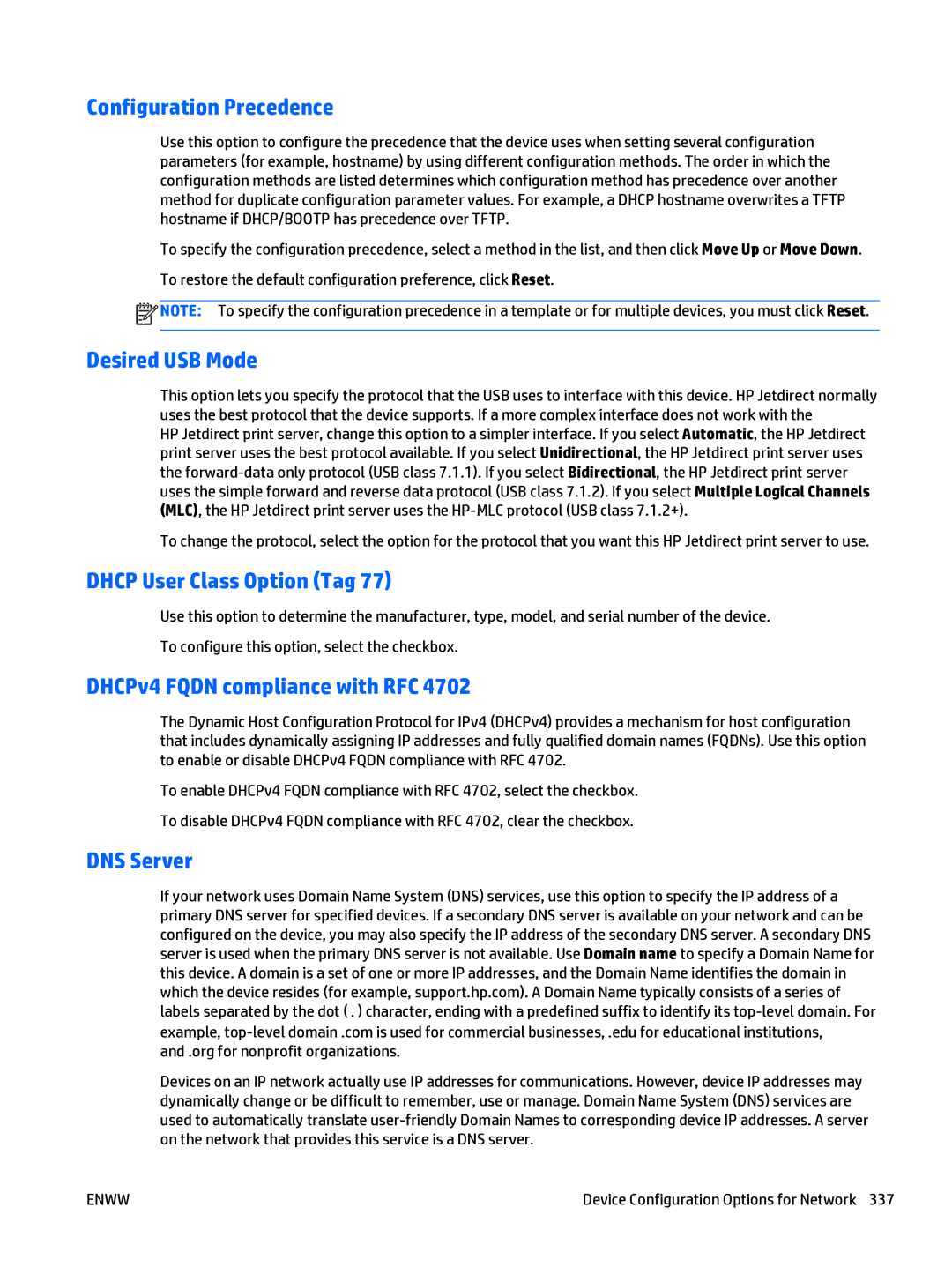Configuration Precedence
Use this option to configure the precedence that the device uses when setting several configuration parameters (for example, hostname) by using different configuration methods. The order in which the configuration methods are listed determines which configuration method has precedence over another method for duplicate configuration parameter values. For example, a DHCP hostname overwrites a TFTP hostname if DHCP/BOOTP has precedence over TFTP.
To specify the configuration precedence, select a method in the list, and then click Move Up or Move Down. To restore the default configuration preference, click Reset.
![]() NOTE: To specify the configuration precedence in a template or for multiple devices, you must click Reset.
NOTE: To specify the configuration precedence in a template or for multiple devices, you must click Reset.
Desired USB Mode
This option lets you specify the protocol that the USB uses to interface with this device. HP Jetdirect normally uses the best protocol that the device supports. If a more complex interface does not work with the
HP Jetdirect print server, change this option to a simpler interface. If you select Automatic, the HP Jetdirect print server uses the best protocol available. If you select Unidirectional, the HP Jetdirect print server uses the
To change the protocol, select the option for the protocol that you want this HP Jetdirect print server to use.
DHCP User Class Option (Tag 77)
Use this option to determine the manufacturer, type, model, and serial number of the device. To configure this option, select the checkbox.
DHCPv4 FQDN compliance with RFC 4702
The Dynamic Host Configuration Protocol for IPv4 (DHCPv4) provides a mechanism for host configuration that includes dynamically assigning IP addresses and fully qualified domain names (FQDNs). Use this option to enable or disable DHCPv4 FQDN compliance with RFC 4702.
To enable DHCPv4 FQDN compliance with RFC 4702, select the checkbox. To disable DHCPv4 FQDN compliance with RFC 4702, clear the checkbox.
DNS Server
If your network uses Domain Name System (DNS) services, use this option to specify the IP address of a primary DNS server for specified devices. If a secondary DNS server is available on your network and can be configured on the device, you may also specify the IP address of the secondary DNS server. A secondary DNS server is used when the primary DNS server is not available. Use Domain name to specify a Domain Name for this device. A domain is a set of one or more IP addresses, and the Domain Name identifies the domain in which the device resides (for example, support.hp.com). A Domain Name typically consists of a series of labels separated by the dot (.) character, ending with a predefined suffix to identify its
and .org for nonprofit organizations.
Devices on an IP network actually use IP addresses for communications. However, device IP addresses may dynamically change or be difficult to remember, use or manage. Domain Name System (DNS) services are used to automatically translate
ENWW | Device Configuration Options for Network 337 |
